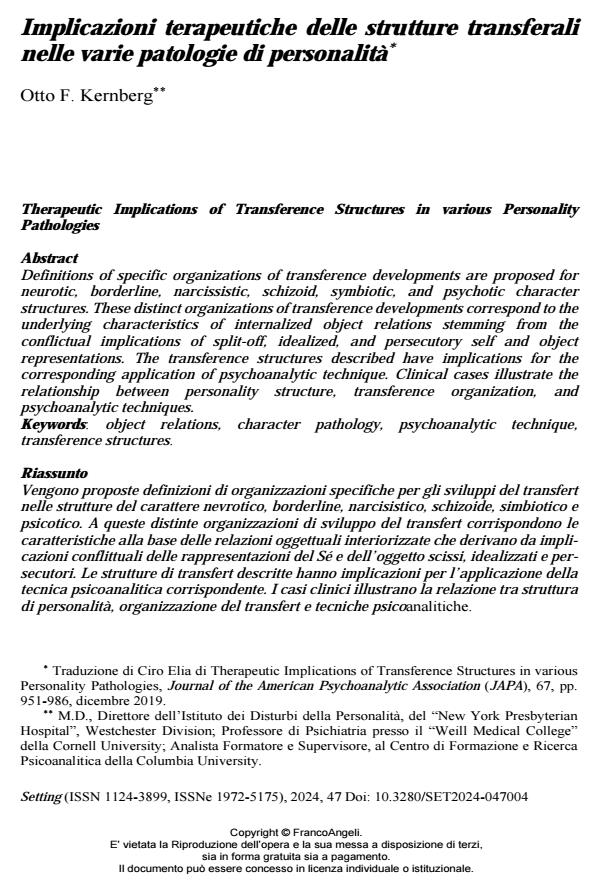Implicazioni terapeutiche delle strutture transferali nelle varie patologie di personalità
Titolo Rivista SETTING
Autori/Curatori Otto F. Kernberg
Anno di pubblicazione 2024 Fascicolo 2024/47
Lingua Italiano Numero pagine 37 P. 41-77 Dimensione file 606 KB
DOI 10.3280/SET2024-047004
Il DOI è il codice a barre della proprietà intellettuale: per saperne di più
clicca qui
Qui sotto puoi vedere in anteprima la prima pagina di questo articolo.
Se questo articolo ti interessa, lo puoi acquistare (e scaricare in formato pdf) seguendo le facili indicazioni per acquistare il download credit. Acquista Download Credits per scaricare questo Articolo in formato PDF

FrancoAngeli è membro della Publishers International Linking Association, Inc (PILA)associazione indipendente e non profit per facilitare (attraverso i servizi tecnologici implementati da CrossRef.org) l’accesso degli studiosi ai contenuti digitali nelle pubblicazioni professionali e scientifiche
Vengono proposte definizioni di organizzazioni specifiche per gli sviluppi del transfert nelle strutture del carattere nevrotico, borderline, narcisistico, schizoide, simbiotico e psicotico. A queste distinte organizzazioni di sviluppo del transfert corrispondono le caratteristiche alla base delle relazioni oggettuali interiorizzate che derivano da implicazioni conflittuali delle rappresentazioni del Sé e dell’oggetto scissi, idealizzati e persecutori. Le strutture di transfert descritte hanno implicazioni per l’applicazione della tecnica psicoanalitica corrispondente. I casi clinici illustrano la relazione tra struttura di personalità, organizzazione del transfert e tecniche psicoanalitiche.
Parole chiave:relazioni oggettuali, patologie del carattere, tecnica psicoanalitica, strutture transferali.
Otto F. Kernberg, Implicazioni terapeutiche delle strutture transferali nelle varie patologie di personalità in "SETTING" 47/2024, pp 41-77, DOI: 10.3280/SET2024-047004